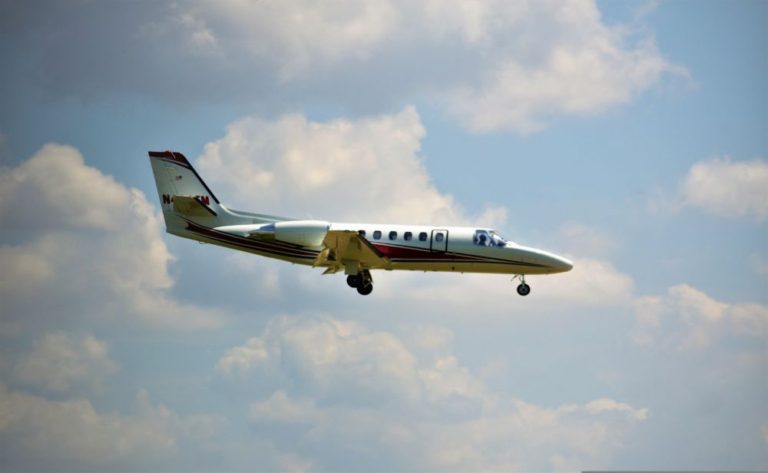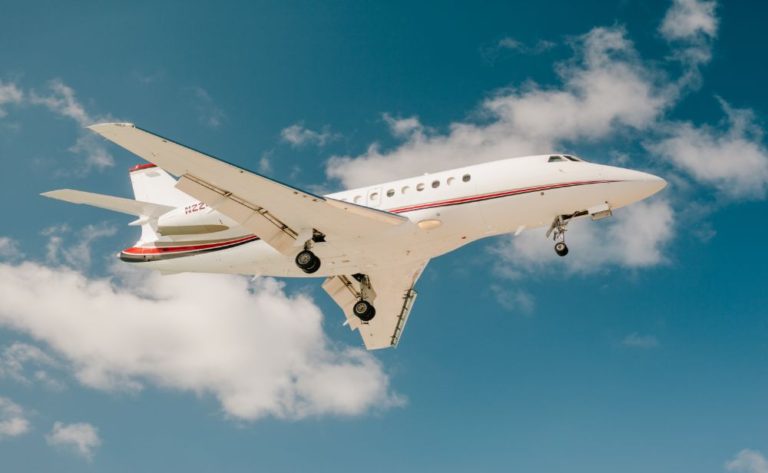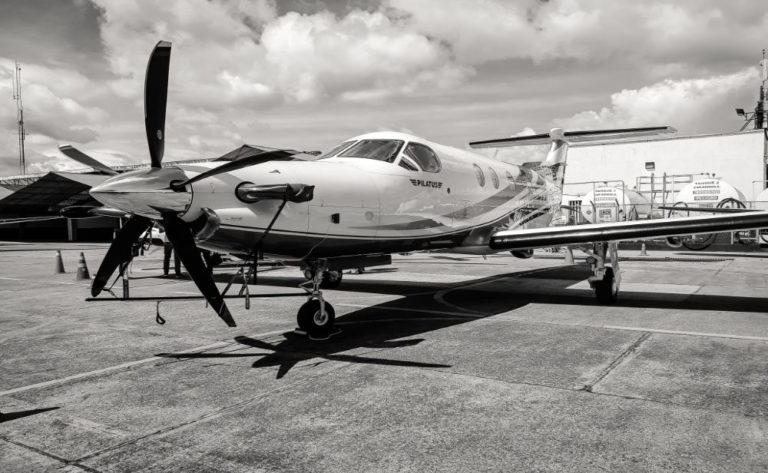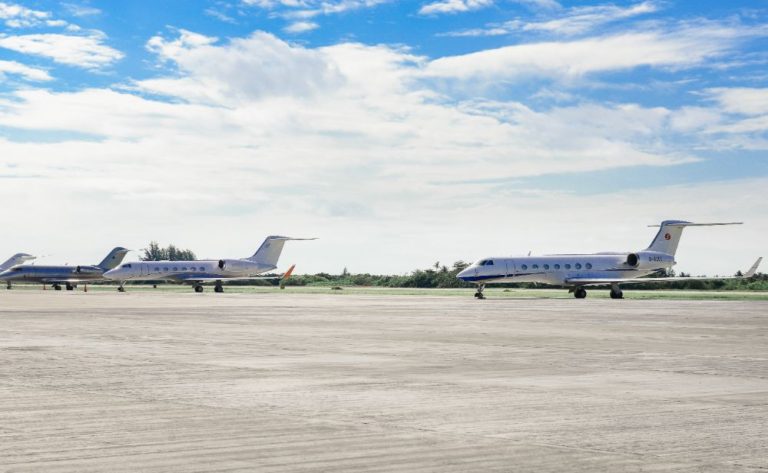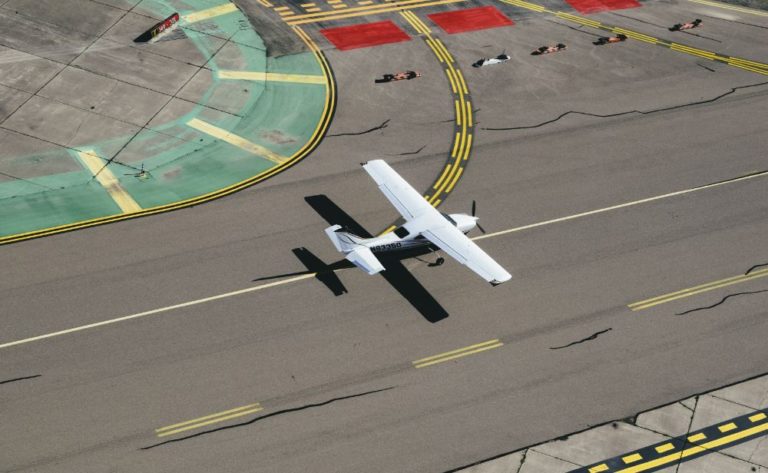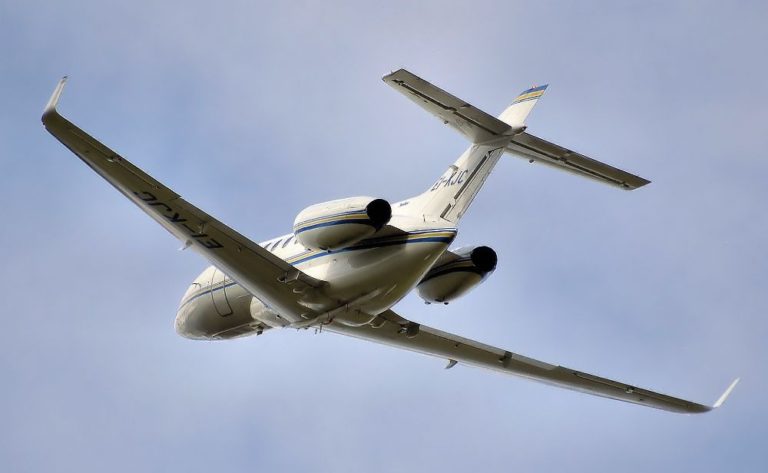Aerostar Aircraft (Cost And Overview)

If you are thinking about purchasing an Aerostar Aircraft, you should be aware of both its price and its technical specifications because pilots have a variety of opinions regarding this aircraft.
During the time it was manufactured (1967–1984), Aerostar Aircraft held the title of world speed record holder for the fastest twin-engine plane in its category. Production of the Aerostar Aircraft lasted from 1967 until 1984. The price of an Aerostar can change depending on the condition of the aircraft; however, the price range for the majority of models is between $99,000 and $370,000.
As a result of my in-depth research into Aerostar Aircraft models, I have accumulated sufficient data to compose an in-depth summary and evaluate their market value in terms of dollars. Due to the fact that these aircraft are considered to be quite obsolete within the aviation industry, my research has led me to conclude that prior to purchasing an Aerostar Aircraft, you ought to first conduct exhaustive checks and evaluations on it.
An Overview of the Aerostar Aircraft
The first flight of the original Aerostar Aircraft took place in 1966, and the Ted Smith Aircraft Company began selling the aircraft the following year after it made its debut. This light transport aircraft has two propelled twin engines and is highly regarded in the aviation community for holding the record for the fastest speed of any plane in its class throughout its years of production. It is a light aircraft that can carry a relatively large number of passengers.
Following the success of its first flight, the Aerostar Aircraft remained a well-liked aircraft throughout its entire 17-year production run, which spanned the years 1967 to 1984. It is simple to comprehend why this aircraft was the subject of a great deal of media attention given that it held a reputation for holding one of the fastest speed records of any aircraft that was in service at the time.
The Ted Smith Aircraft Company was responsible for the release of the early models of the Aerostar; however, over the next 17 years, the rights to the aeroplane would be the subject of a series of acquisitions, the most notable of which occurred in 1978 when the Piper Aviation Corporation took over ownership of the rights. Even though different Aerostar models have undergone numerous revisions and improvements throughout the course of its history, the fundamental idea that underpins the plane has remained unchanged.
This aircraft is officially designed for light transport, which is precisely why it is utilised very frequently for the purpose of air taxiing. The cabin of the Aerostar, on the other hand, is significantly more opulent than the cabins of other twin-engine planes in its class, which is one of the reasons why it is such an appealing asset for company leaders and other corporate figures. You get a top-tier jet that is constructed for both luxury and efficiency when you combine the Aerostar’s high level of comfort with its rapid cruising speed.
Having stated that, numerous skilled pilots have provided Aerostar Aircraft models with varying and sometimes negative feedback. This aircraft has a high level of performance, yet it is known for being difficult to fly due to its complexity and the challenges it presents. It’s possible that pilots who have received specialist training on Aerostar Aircraft won’t have as much of an issue with this, but the fact that the controls aren’t particularly user-friendly or intuitive makes this aircraft problematic for a lot of pilots, and it might even endanger their lives.
Before getting too comfortable in the cockpit, pilots should have significant training in Aerostar Aircraft as this is not a beginner-level aircraft by any stretch of the imagination. Although there have been reports of accidents that were caused by mechanical malfunctions, one of the most common causes of Aerostar crashes was simply a pilot’s inability to comprehend the complex controls of the aircraft.
When it comes down to it, this aircraft is not forgiving in any way, shape, or form; nevertheless, if you make the investment in learning how to properly fly an Aerostar, you will comprehend the reason why members of the aviation community hold this plane in such high respect. Although the Aerostar’s complexity is one of its flaws, the fact that it is also one of the primary reasons why it is such a high-performance machine is not lost on anyone.
The Specifications of the Aerostar Aircraft
Because almost all Aerostar Aircraft feature top-of-the-line specifications and performance capabilities, they have received a great deal of praise from the aviation industry. This praise is a direct result of the quality of the Aerostar Aircraft. The Aerostar genuinely delivers what a lot of different pilots desire out of a plane because it is both a luxury transit aircraft and it holds the world record for speed.
Now, keep in mind that over the years, other Aerostar models have been released. Some of these versions include larger engines, updated interiors, and redesigned frame materials. Because of this, the specs for the Aerostar can shift significantly depending on the particular model that is under consideration. Having said that, let’s take a more in-depth look at the general specifications for the Aerostar Aircraft, which are as follows:
• Powerplant: Lycoming IO-360 Engine (2x)
• The cabin is not pressurised; the maximum number of passengers is five (plus one for the crew).
• Length: 34 feet 9.75 inches; Wingspan: 36 feet 8 inches; Height: 12 feet 1 inch; Empty Weight: 4,275 pounds; Gross Weight: 6,315 pounds; Cruise Speed: 242 miles per hour (210 kilometres per hour); Maximum Speed: 306 miles per hour (266kt)
25,000 feet is the service ceiling, 1,840 feet per minute is the rate of climb, and 1,024 miles is the range (890nmi)
The Aerostar was an absolute game-changer for the business sector at the time it was released, and the reliability of its specifications is one of the primary reasons that variants of the product are still available for purchase today.
Aerostar Aircraft Models
Aerostar planes have been subjected to various modifications and revisions ever since their first debut. The Model 360 was Aerostar’s first aircraft, and it was powered by a pair of Lycoming IO-360 engines that each produced 180 horsepower.
After the early versions proved to be successful, Ted Smith Aircraft Company began producing increasingly sophisticated iterations of their prototype, which also proved to be commercially viable. As a result of other businesses realising the potential of Aerostar, the company was the target of a number of acquisitions beginning in the late 1960s and continuing until the late 1970s. Ted Smith eventually bought the company back in 1972, and Piper eventually bought it in 1978.
The Avro Aerostar was manufactured in no less than 15 distinct variants over the course of its production run. Due to regular engine updates that increased both speed and performance, the twin-engine aircraft was able to maintain its position as the world’s fastest aircraft of its class for as long as it was in service. The following is a list of the most important Aerostar models that were produced between the years 1967 and 1984:
• Model 360
• Model 400
• Model 600
• Model 601
• Model 602
• Model 621
• 700 Superstar
• Model 800
• Speedstar 850
• Aerostar Aircraft Cost
• Aerostar Aircraft have been around for a long time, and you can find a number of models on the used market today. Depending on the performance capabilities that you desire out of an aeroplane, you may find that the specifications of one Aerostar fits your in-flight needs better than another.
• Aerostar Aircraft Specifications
• Aerostar Aircraft have been around for a long time, and you can find a number of models on the used market today. Having said that, the cost of purchasing an Aerostar can be quite variable based not just on the model of the aircraft but also, and perhaps most crucially, its condition.
• Given that the Aerostar aircraft entered its final year of manufacture in 1984, it will be exceedingly difficult to track down examples of this aircraft that have been meticulously kept. Nevertheless, it is entirely possible to track down models that are in excellent condition because there are a significant number of pilots who have taken excellent care of their aeroplanes throughout the course of their careers.
The high-end Aerostar Aircraft comes in a few different model iterations, each with its own unique price tag. The primary factor that will cause these aeroplanes to be sold at a higher price is that they have probably logged less flight hours and have been subjected to higher levels of maintenance and upkeep. The price of one of these vehicles can range from $250,000 to over $370,000. A quality that has a significant role in determining the final cost of a luxury product The Aerostar will be its final TBO. Because this is one of the more expensive aspects of aircraft maintenance, aircraft that have just had servicing will have prices that are significantly higher.
• Cost on Average The majority of the Aerostar Aircraft that you will come across on the market will have price tags that are very reasonable for the most part. Since this aircraft has been in production for several decades, its value has been steadily declining year after year. Having said that, the price of Aerostar jets falling into this group is subject to a great deal of market volatility. There are models available on the market with prices as low as $99,000, and in some cases much lower than that. However, the price range for a respectable alternative is anywhere from $99,000 to $250,000, and you should plan accordingly.
• When it comes to evaluating aeroplanes in this price category, I do my best to evaluate them in the most comprehensive manner feasible. Before making any long-term commitments, it is important to determine whether the aircraft in question has any potential faults, given its age and the number of years it has been in operation. This is because any number of underlying problems could be present. You might be able to locate Aerostar models that are on the lower end of the price spectrum, but you need to think about when this aircraft had its last time between overhauls (TBO), as well as whether there are any other mechanical problems lurking beneath the hood.
Variable Costs
When purchasing an aeroplane, the variable costs of operation and maintenance are sometimes the ones that are easiest to ignore or grossly underestimate. The hobby of aviation is not inexpensive, and it necessitates periodic reinvestment in order to maintain a plane’s ability to command a high resale price and, more significantly, to guarantee that it is safe to fly.
Because each Aerostar Aircraft is equipped with two strong engines that have to be refurbished every 2,000 to 2,800 miles, it is reasonable to anticipate that the operational expenditures will accumulate over the course of time. Your operational costs will also be heavily impacted by the price of fuel; however, because to the high degree of variability that exists within the market for gasoline, it can be challenging to accurately predict these costs over an extended period of time.
You can anticipate variable costs of approximately $192,000 overall, which works out to $578 per hour when broken down. The Aerostar’s engines are far more powerful than those found in most other twin-engine aircraft of a similar size, which is one of the primary reasons why purchasing one of these is a significant financial investment.
Because turbocharged engines require more regular repairs, the power and performance that you get from an Aerostar does come at a cost. However, this does not negate the fact that the Aerostar is an excellent choice. Having said that, putting off an Aerostar’s routine maintenance is a surefire method to drive up its long-term maintenance expenses and reduce the aircraft’s level of flight safety.
The Cost of Insurance
As someone who has been interested in flying for quite some time, I can confidently declare that purchasing enough insurance for your aircraft is an absolute must. Buying an aircraft is a significant financial commitment, and if you want to avoid excessive repair costs as well as legal difficulties, it is strongly suggested that you select a reputable insurance provider as your partner.
There are two basic types of coverage that may be purchased for aviation insurance: liability and hull. The amount of expertise you have in the cockpit will, in a manner analogous to that of vehicle insurance, determine the price that you will pay for aviation insurance.
If you have some time under your belt as a pilot and a respectable quantity of hours under your belt, the majority of insurance providers will consider you a candidate for a better premium. On the other hand, if this is your first time flying, you should be prepared to pay a higher cost for your travel insurance.
Coverage for Legal Obligations
There are a few different kinds of extra insurance available, but liability protection is not one of them. Liability coverage is the very minimum form of insurance that every pilot is required to have, since it is what will protect you in the event of an accident. This is the case because it is what is needed by law.
Although the costs of liability coverage are subject to change based on the model of Aerostar that you fly, experienced pilots typically pay between $750 and $1,120 per year for the coverage. Introductory-level pilots who do not meet the requirements for a lower rate will be required to pay a higher fee, with the range of $970 to $1,125 representing the average annual cost.
Insurance for the Hull
Because hull insurance is a form of protection that is not required, unlike liability insurance, some pilots choose not to purchase it for their aircraft. You might be surprised by how frequently it is financially beneficial to carry hull insurance, as it will protect your aircraft from specific types of damage up to a certain limit.
Because unneeded repairs are expensive and can quickly add up to a significant sum, having hull insurance is quite vital. Having hull insurance is suggested for the majority of aircraft, particularly those on the more expensive end of the pricing spectrum, so that you can protect your investment and minimise potential costs over the course of the aircraft’s lifetime.
Hull insurance for Aerostar planes is quite pricey, with certified pilots having to pay anything from $5,500 to $8,200 annually to protect their aircraft. The going rate for unqualified pilots is significantly more than this, ranging anywhere from $9,850 to $14,000 per year as the standard.
Is It Difficult to Fly an Aerostar Aircraft?
If you are still somewhat inexperienced in flying, you probably shouldn’t go for the Aerostar. This particular aircraft is not a toy for inexperienced pilots but rather is considered to be a pilot’s plane.
Once you have the hang of flying Aerostar aircraft, you will find that they are a lot of fun to pilot and have excellent specifications and performance. Because piloting an Aerostar requires some practise and familiarisation before you can assume the controls on your own, comprehensive instruction is necessary before you can earn that privilege.
These aircraft are more complicated than other twin-engine aircraft in the same class, and pilots flying an Aerostar should not undervalue the difficulties they may encounter while operating one of these planes. I consider Aerostar Aircraft to be more difficult to operate than the majority of twin-engine planes since professional aviators advocate considerable training and annual retraining for pilots of Aerostar Aircraft.
Are Aerostar Aircraft Reliable?
Numerous times, the dependability of Aerostar Aircraft has been called into doubt by individuals working in the business. In my experience, the dependability of this aircraft is typically proportional to that of the person who operates it. When compared to a lot of other models currently available, this one is not an easy plane to fly, and because of that, some pilots may find it to be less trustworthy.
Controls on the Aerostar are difficult to operate and complex, so it takes a lot of time and effort to learn how to use them properly and get used to them. The probability of crashing an Aerostar jet shoots up tremendously if you don’t have any prior experience flying them.
Before you feel confident going into the cockpit of an Aerostar by yourself, you will need to put in some time to get familiar with its controls and procedures. Because of this, industry experts advise that all owners of Aerostar Aircraft participate in comprehensive training and retraining on an annual basis.
After devoting some time to learning about this aircraft, you will discover that it is exceptionally dependable and boasts outstanding performance. The Aerostar has an accident rate of 4.4 per 100,000 flying hours, and the majority of these mishaps may be traced back to pilot error.
Do You Have Trouble Locating Aerostar Aircraft Parts?
You may expect a time before overhaul (TBO) to occur every 2,000 to 2,8000 flight hours, and routine maintenance will be a continual and necessary requirement for any Aerostar owner. Before making a final decision to buy an older aircraft like the Aerostar, I always make it a point to investigate its components availability to ensure that they won’t be difficult to find.
Repairs for ageing aircraft that have not been produced for several decades might be a bit of a crapshoot because there may be a shortage of components and only a small number of mechanics that have the experience and knowledge to work on the aircraft. Having said that, finding Aerostar components should not be too difficult; nevertheless, the difficulty may vary based on the model variant of the Aerostar that you own.
The Aerostar Aircraft Corporation has been quite active in responding to the requests for components that have been made by customers, which has made repairs and maintenance a relatively uncomplicated process. However, older Aerostar models such as the 600 and 601 series are notoriously challenging when it comes to locating certain parts.
Should You Consider Purchasing an Aerostar Aircraft?
Because of the technical specifications and the performance capabilities that these aeroplanes offer, it is simple to comprehend why they are still in use in the modern aviation sector. Aerostar has developed a very strong reputation within the aviation industry.
If you are on the fence about purchasing an Aerostar, the most important factor that will determine whether or not you make the purchase is whether or not you are committed to training to fly one of these planes. Because these aircraft are more difficult to pilot than many other similar planes in this class, you will need to devote a significant amount of time to training in order to become competent in their operation.
Having said that, if you are just starting out in aviation, you probably shouldn’t spend your money on an Aerostar. Instead, you should look into purchasing an alternative aircraft that is simpler to fly before upgrading to a plane that has this level of complexity. On the other hand, seasoned pilots who are open to learning the controls and who are at ease in the air will appreciate having access to an Aerostar when it is stored in the hangar.
